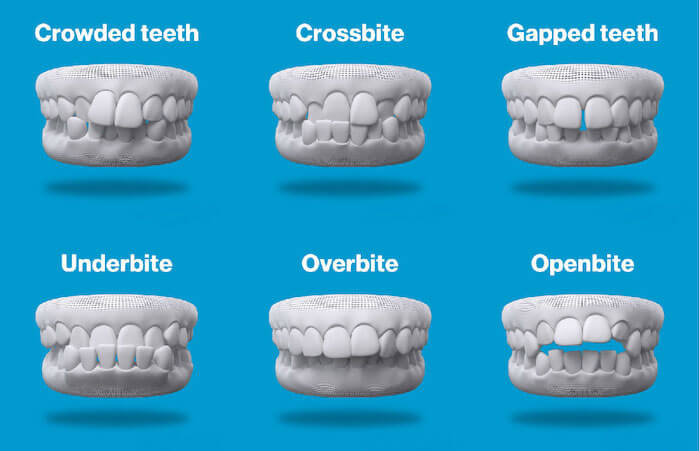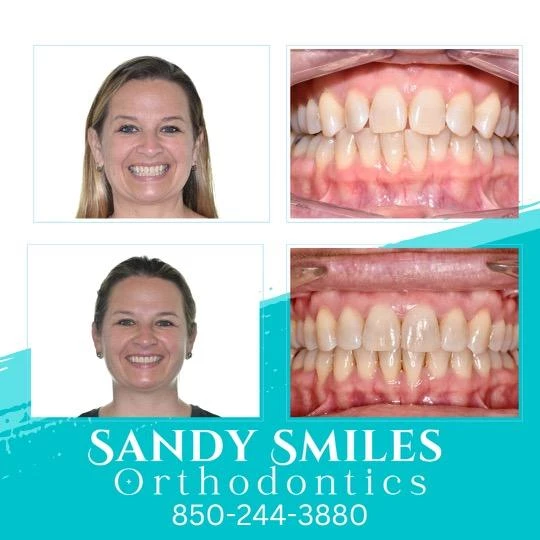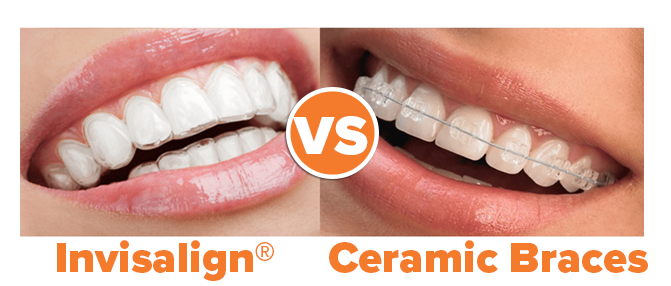Invisalign vs. Standard Dental braces: Which Choice Is Right for You?
When considering orthodontic treatment, the selection in between Invisalign and traditional dental braces offers several essential elements that merit careful analysis. Invisalign offers a discreet alternative with removable aligners, while standard braces offer an extra noticeable yet reliable service for severe imbalance.
Overview of Therapy Choices

On the other hand, standard dental braces contain metal brackets and wires that are bound to the teeth. This technique applies constant pressure in time to attain positioning. While effective for intricate orthodontic issues, typical braces require routine check outs for changes and can position challenges in keeping dental hygiene due to the difficulty of cleaning up about cables and braces.
Both choices have their advantages, and the choice frequently depends upon specific dental problems, lifestyle preferences, and client compliance. Eventually, seeking advice from an orthodontic expert is vital for determining one of the most appropriate treatment strategy customized to individual demands. Recognizing the nuances of each choice can significantly affect the total success of orthodontic therapy.
Aesthetic Considerations
A significant factor influencing the selection in between Invisalign and traditional braces is the aesthetic charm each therapy provides. Invisalign aligners are crafted from clear plastic, making them virtually unseen when worn.
On the other hand, traditional braces are composed of metal braces and cables, which can be a lot more obvious. While innovations in orthodontic innovation have led to the growth of smaller sized braces and colored elastics, typical dental braces still preserve a more conspicuous profile. For some individuals, the exposure of dental braces might discourage them from seeking needed treatment.
Eventually, the choice between Invisalign and typical braces might hinge on personal choices relating to looks. Clients that prioritize discernment frequently favor Invisalign, while those who are much less concerned about presence may select traditional dental braces. Comprehending the visual implications of each alternative is critical for making a notified choice that lines up with one's lifestyle and preferences.
Comfort and Convenience

In regards to ease, Invisalign aligners are detachable, enabling individuals to enjoy their preferred foods without limitation and preserve optimal oral health. Brushing and flossing are simplified, as the aligners can be obtained during these regimens, whereas typical dental braces need cautious steering around cords and brackets.
Furthermore, Invisalign's progressive system permits for less orthodontic visits. Patients typically obtain multiple sets of aligners simultaneously, which can simplify the therapy process and minimize time invested in the orthodontist's chair. On the other hand, conventional dental braces require normal changes, making them much less hassle-free for those with active schedules. Invisalign. In general, the convenience and comfort of Invisalign make it an enticing selection for numerous people seeking orthodontic therapy.
Treatment Duration and Performance
While both Invisalign and standard braces are efficient in dealing with dental misalignments, the duration of treatment can differ dramatically between both choices. Commonly, Invisalign treatment can take anywhere from 12 to 18 months, depending on the intricacy of the case. The clear aligners work by progressively moving teeth into their wanted positions, and normal follow-ups with an orthodontist assistance make certain progress stays on course.
On the other hand, standard braces commonly need a longer dedication, generally varying from 18 months to three years. This is due to their fixed nature and the use of braces and cords, which can be more reliable for complex cases and extreme imbalances (Invisalign). The therapy efficiency of standard braces is well-documented, as they permit exact changes and higher control over tooth motion
Inevitably, the selection between Invisalign and standard dental braces might depend upon both the anticipated therapy period and the details dental problems at hand. Consulting with an orthodontist is critical, as they can provide customized suggestions based on private needs, guaranteeing the chosen approach lines up with desired timeframes and outcomes.
Cost Comparison and Insurance Policy Alternatives
Expense plays a considerable function in the decision-making process for individuals taking into consideration orthodontic treatment, whether choosing Invisalign or conventional braces. Typically, the cost of Invisalign arrays from $3,000 to $8,000, while standard braces normally set you back between $2,000 and $6,000. Variables affecting these costs consist of the intricacy of the case, the period of treatment, and geographical area.
Several oral insurance coverage strategies offer partial protection for orthodontic therapies, yet the specifics can differ extensively. Normally, conventional dental braces may be more regularly covered by insurance policy plans contrasted to Invisalign, which some insurers classify as an aesthetic treatment.
In addition, numerous orthodontic methods provide flexible settlement strategies, making both therapy options more available. Individuals must ask about prospective funding choices and discounts for in advance payments. Evaluating the check this site out total expense, consisting of insurance read this post here benefits and settlement strategies, is necessary for making an educated decision that straightens with both aesthetic preferences and budget plan considerations.

Conclusion
In recap, the choice in between Invisalign and traditional dental braces pivots on several variables, consisting of visual preferences, comfort, therapy period, and price. Invisalign uses a very discreet, detachable choice that assists in dental hygiene and nutritional versatility, while typical braces may be better for complex dental problems and frequently come with a reduced price point. Eventually, assessment with an orthodontist is vital to analyze specific conditions and determine the most ideal therapy option for accomplishing ideal dental placement.
When considering orthodontic therapy, the option in between Invisalign and conventional dental braces presents numerous vital factors that merit mindful examination.Comparing Invisalign and typical dental braces exposes distinctive treatment choices for orthodontic improvement.While both Invisalign and standard braces are effective in remedying oral misalignments, the duration of treatment can differ substantially in between the two alternatives.Expense plays a considerable duty in the decision-making procedure for people thinking about orthodontic therapy, whether choosing for official site Invisalign or typical dental braces.In summary, the option in between Invisalign and standard braces pivots on several aspects, consisting of visual preferences, convenience, therapy period, and expense.